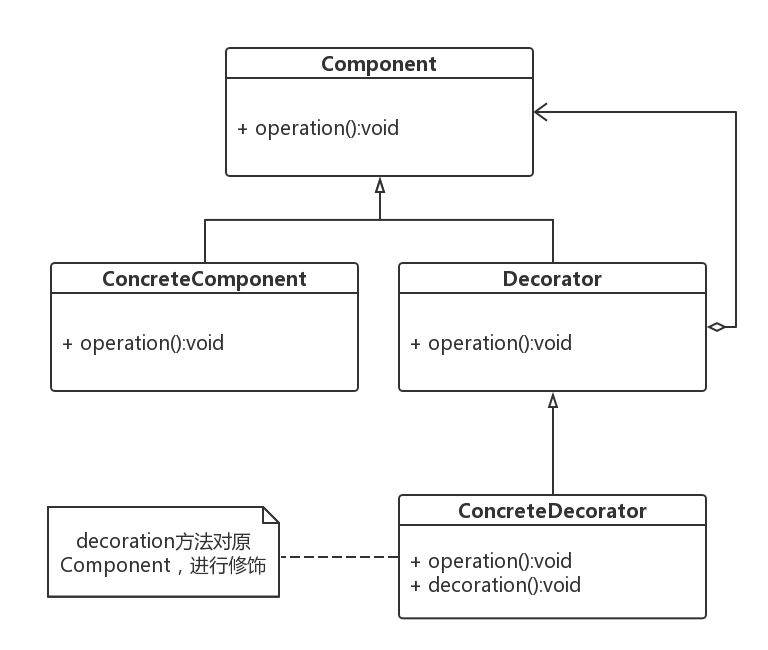装饰模式也是结构性设计模式之一。它在不必改变类文件和继承的情况下,动态地扩展一个对象的功能,是继承的替代方案之一。它通过创建一个包装对象,也就是装饰对象来包裹真实的对象。
它的定义是:动态地给一个对象添加一个额外的职责,就增加功能来说, 装饰模式比生成子类更加灵活。  在装饰模式下有以下角色:
在装饰模式下有以下角色:
- Component: 抽象组件,可以是接口或者抽象类,被装饰的最原始的对象。
- ConcreteComponent:组件具体实现类。被装饰的具体对象
- Decorator:抽象装饰者,从外类来拓展Component类的功能,但对于Component来说无须知道Decorator的存在,而Decorator持有Decorator
- ConcreteDecorator: 装饰者的具体实现类
装饰模式在现实中都与很多例子,人要穿衣服,给手机贴膜等等。现在我们来举一个人学知识的例子
抽象组件: 作为人肯定要上学,我们先定义一个人的抽象类,里面有读书的抽象类
public abstract class People{
public abstract void wear();
}
组件具体实现类:
public class Junjun extends People{
@Override
public void wear(){
System.out.println("军军穿上衣服");
}
}
抽象装饰者
public abstract class Parent extends People{
private People son;
public Parent(People son){
this.son = son;
}
@Override
public void wear(){
son.wear();
}
}
装饰者具体实现类
public class Father extends Parent {
public Father(People son){
super(son);
}
public void wearHat(){
System.out.println("爸爸给军军戴帽子");
}
@Override
public void wear(){
son.wear();
wearHat();
}
}
public class Mother extends Parent {
public Mother(People son){
super(son);
}
public void wearShoes(){
System.out.println("妈妈给军军穿鞋子");
}
@Override
public void wear(){
son.wear();
wearShoes();
}
}
客户端调用
public class Client{
public static void main(String[] args){
Junjun junjun = new Junjun();
//爸爸给军军戴帽子
Father father = new Father(junjun);
father.wearHat();
//妈妈给军军穿鞋子
Mother mother = new Mother();
mother.wearShoes();
}
}